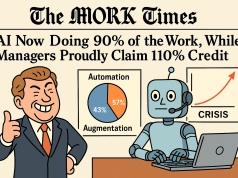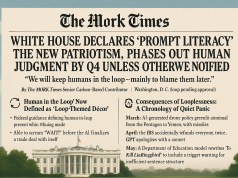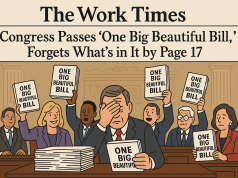In the relentless pursuit of productivity and the relentless pace of modern work culture, there’s a growing movement urging us to pause and breathe: mindfulness in the workplace. For readers of The Work Times who navigate the high demands akin to the spheres of the Washington Post, The New Yorker, and The New York Times readerships, the topic of a mindful workday isn’t just a luxury—it’s a necessity.
Mindfulness, the practice of maintaining a nonjudgmental state of heightened or complete awareness of one’s thoughts, emotions, or experiences on a moment-to-moment basis, has been shown to offer a myriad of benefits in our personal lives. But what about our professional lives? How can mindfulness be more than just a buzzword in an environment where deadlines, meetings, and performance metrics are the order of the day?
Research has shown that mindfulness can increase the quality of our work. A study by the American Psychological Association found that mindfulness can reduce emotional exhaustion, help with anxiety and depression, and lead to greater job satisfaction. But the benefits don’t stop with individual well-being. Mindful practices promote attention to detail, enhance creativity, and foster better decision-making – all crucial for productivity and improvement of workplace dynamics.
So, how can companies cultivate a culture of mindfulness? It starts with buy-in from the top. Leaders who embody and endorse mindfulness pave the way for institutional change. Programs such as meditation sessions, mindful breathing breaks, or even the integration of mindfulness training into professional development plans can serve as practical applications. Companies like Google have led the way with their ‘Search Inside Yourself’ program, seeing remarkable improvements in employee well-being and cooperation.
However, barriers exist. The foremost challenge is breaking the persistent stigma that equates busyness with importance and stillness with idleness. Changing such entrenched cultural norms takes time and evidence of efficacy. There’s also the challenge of inclusivity – ensuring that mindfulness programs meet the diverse needs and beliefs of all employees.
Industry innovation emerges as a natural byproduct of a workforce that values clarity of thought and emotional intelligence. When workers can approach their tasks with calm focus, they are better positioned to develop innovative solutions and contribute to meaningful advancements in their fields. Moreover, job satisfaction and long-term career development are bolstered by a mindful approach to work, potentially leading to reduced turnover and enhanced talent retention.
The real-world impacts of such practices are evident. Aetna reported a 28% reduction in stress levels after implementing a mindfulness program, and the company estimated an average productivity boost of 62 minutes per week per employee, amounting to $3,000 per employee per year in productivity gains.
The implications of fostering a mindful workday are profound. As we continue to navigate the complexities of modern employment landscapes, mindfulness offers a beacon of balance and well-being. By championing attention and compassion, businesses don’t just invest in the health of their employees; they invest in the health of their bottom line.
The Work Times invites you to consider: How might your workday transform if mindfulness was at its core? For those who shape the very fabric of our economic systems, this is not just idle contemplation—it is the potential for a revolution in the way we work and live. Let’s breathe life into the conversation and, more importantly, our daily practices.




























